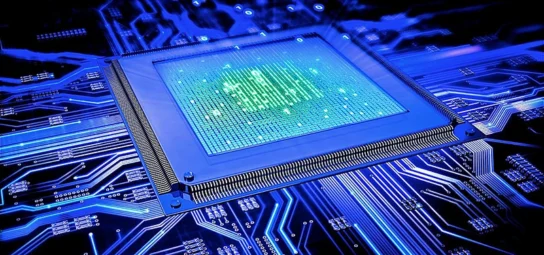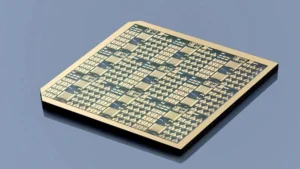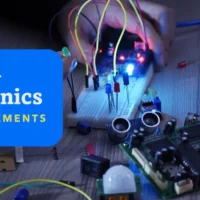Gallium Oxide in Power Electronics: Pioneering a Revolution in Efficiency and Performance
- by Manish Kumar
- 27 January 2024
- 4 minutes read

Introduction to Gallium Oxide:
Imagine the world of gadgets and electronic devices getting a major upgrade – that’s what Gallium Oxide is all about. This super-special material is like a game-changer, ready to make our electronic stuff work way better. Gallium Oxide has unique powers that can boost efficiency and performance in all sorts of gadgets. With its super-electric abilities, it’s becoming a star in the world of making things run smoothly. This isn’t just a small change; it’s like a big leap forward that promises a future where our electronic devices not only become more powerful but also use energy in a smarter and friendlier way. Gallium Oxide is like a superhero in the world of electronics, bringing in a new era of exciting possibilities.
Advantages of using Gallium Oxide over other material in Power Electronics :

Wide Bandgap:
Gallium oxide has a wide bandgap, a crucial factor for power electronics. A wide bandgap allows for higher breakdown voltages, making it suitable for high-power applications.
High Breakdown Voltage:
The material exhibits a high breakdown voltage, ensuring reliability and stability in power electronic devices. This feature is particularly important for components operating in challenging conditions.
Improved Power Efficiency:
Gallium oxide’s intrinsic properties contribute to reduced energy losses during the conversion and transmission of power. This results in enhanced power efficiency, a critical factor in developing sustainable and effective energy infrastructures.
High-Temperature Stability:
Gallium oxide demonstrates remarkable stability at high temperatures. This quality ensures that power electronic components made with gallium oxide can operate efficiently in environments with elevated temperatures without compromising performance.
Compact Device Design:
The superior thermal conductivity of gallium oxide allows for the design of more compact and lightweight power electronic devices. This is particularly beneficial in industries where size and weight constraints are essential, such as in electric vehicles and portable electronics.
Its Application:

High-Power Devices:
Gallium oxide’s wide bandgap and high breakdown voltage make it ideal for high-power devices, such as power switches and diodes. These components can handle large amounts of electrical power efficiently.
Electric Vehicle Power Systems:
Gallium oxide is increasingly utilized in electric vehicle (EV) power systems. Its efficiency in power conversion contributes to longer battery life and improved performance, addressing challenges in the adoption of electric vehicles.
Renewable Energy Converters:
In renewable energy applications, gallium oxide plays a crucial role in converters and inverters. Its high efficiency in energy conversion makes it valuable for harnessing power from renewable sources like solar and wind.
Next-Generation Transistors:
Gallium oxide transistors are paving the way for the development of next-generation electronic components. These transistors offer high switching speeds, lower losses, and enhanced power handling capabilities, improving the performance of electronic devices.
Power Supplies and Inverters:
Gallium oxide is used in the manufacturing of power supplies and inverters, where its superior thermal conductivity and high breakdown voltage contribute to the development of efficient and reliable components.
Smart Grid Technology:
The efficiency and stability of gallium oxide make it suitable for smart grid technology. It can be applied in power electronics devices that enable the efficient distribution and management of electrical power in smart grid systems.
Satellite Power Systems:
Gallium oxide is employed in satellite power systems due to its ability to operate reliably in space conditions. Its high-temperature stability makes it suitable for components exposed to extreme temperature variations.
Power Amplifiers and RF Devices:
Gallium oxide finds applications in power amplifiers and radio frequency (RF) devices. Its unique combination of electrical properties allows for the development of efficient and high-performance devices in communication systems.
Uninterruptible Power Supplies (UPS):
In UPS systems, where maintaining a constant power supply is crucial, gallium oxide contributes to the development of high-efficiency components. This ensures the reliable operation of critical electronic equipment during power outages.
Military and Aerospace Electronics:
Gallium oxide is utilized in military and aerospace electronics due to its ability to withstand high temperatures and harsh environmental conditions. Its application in power electronics ensures the robust performance of electronic systems in these sectors.
Wanna know about how pervoskite powered solar cells are transforming solar panels ?
Research and Development Initiatives:
Scientists are working hard to make gallium oxide even more amazing. They’re figuring out how to use it better in our gadgets and machines. They’re like the scientists in a superhero movie, always trying to make things cooler and more efficient.
Market Implications:

Gallium oxide is not just a cool gadget; it’s changing the whole game. Industries are realizing how awesome it is, and it’s reshaping how we make and use electronic things. It’s like a revolution, sparking competition, new ideas, and making electronics friendlier to our planet.
Conclusion:
In the world of power electronics, gallium oxide emerges as a remarkable material. Its exceptional properties, from a wide bandgap to high-temperature resilience, make it a substance with limitless potential. As industries increasingly adopt gallium oxide for applications like electric cars and renewable energy, it marks a revolution in our approach to power usage. The ongoing quest to unlock gallium oxide’s full potential promises a future where our gadgets are not only powerful but also environmentally friendly. Gallium oxide is a lasting presence, and its influence on electronics is poised to be truly extraordinary.
Discover more from WireUnwired Research
Subscribe to get the latest posts sent to your email.










